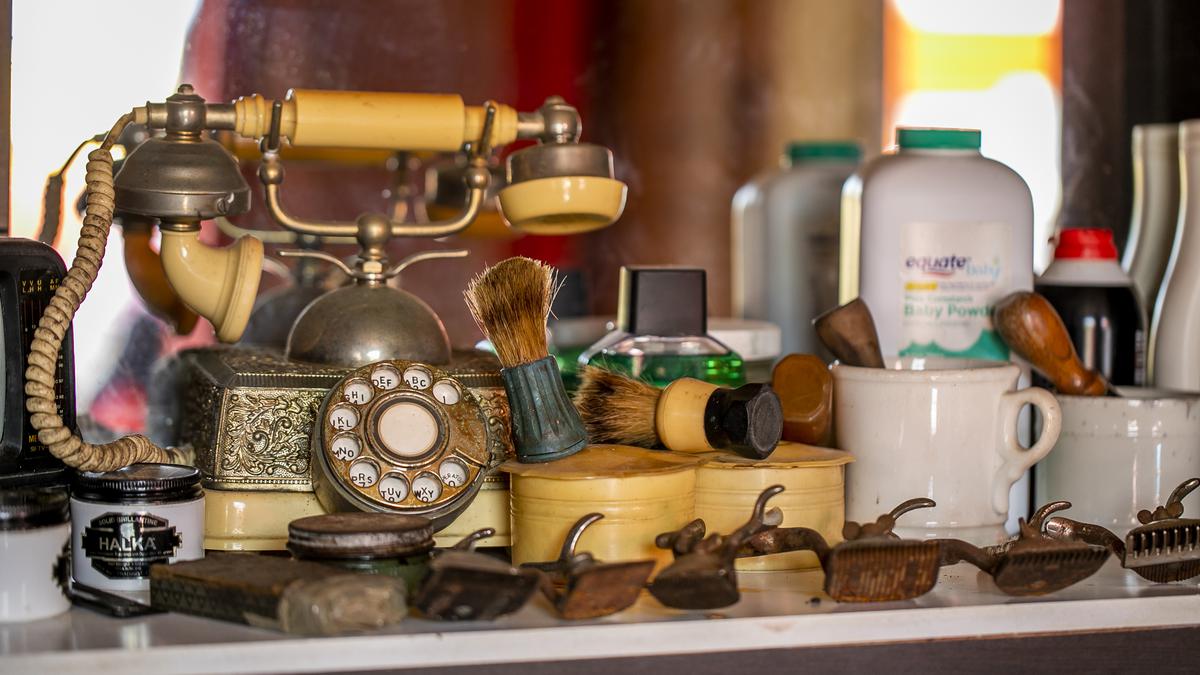Villa Madera: Made from Culture and Nostalgia

Source: El Nuevo Día
Hatillo.- Adriano Madera-Torres always wanted to have his own town. His father, a World War II veteran, did not allow him to go to the public square or to the patron saint festivities. What he never imagined was that his wish would come true.
It was precisely during his retirement as a history teacher from the public education system that he began to build a recreational area to hold important celebrations with his family. It was there he added souvenirs from his longed-for decade of the 50s.
This is how he developed his Villa Madera project in Barrio Bayaney in Hatillo. It is a museum full of experiences perpetuated in approximately 20 structures that portray the Puerto Rico of yesteryear. It includes a grocery store, market square, barbershop, police station, town hall, church, inn, pharmacy and a small classroom.
"It's called Villa Madera because my last name is Madera and, for the most part, the structures are made out of wood. I started building when my children were little. The first thing [I did] was the pool area and a hut where my wife would make food for parties," the 66-year-old man recalled.
"I crafted this with cultural items from Europe and what we had here from America, because our culture is a mix [of both]. It's why I built this small space, a town from the 50s or before. It has items that Puerto Rico doesn't have anymore, that disappeared," said Madera, who used to be a history teacher.
The tour begins at Hospital Dr. Arias (Dr. Arias' Hospital), where you can see a mannequin dressed in a doctor's uniform that seems to welcome you to his office.
"Dr. Arias was the one who treated my parents and my children when they were little. He's very old and I dedicated this to him. It's the family-doctor relationship. The office has many items from the 50s. We have the doctor, a lamp to check the patient and an old medical scale," he explained as he showed a rotary phone on the desk.
It is followed by the police station, a kiosk and the town hall. In them he continues to pay tribute to important people in his life, in addition to exposing the needs that the society of that time faced.
For example, at Las Brasas kiosk, Madera remembers the constant risk the jíbaro who made the pitorro faced. It was a product that used to be done illegally when people could not find a way to earn a living.
"During tiempo muerto (dead time of the harvest), when the jíbaro had nowhere to work, they dedicated themselves to making pitorro. Here we have the still with the original serpentine to extract rum and pitorro. It's called caña (cane) because it comes from the sugar cane molasses. They ferment it and then boil it, evaporating it. When the steam condenses, the splash of rum comes out.
"Families were made of 15 people, and they had to be taken care of; there was no welfare. The government persecuted them [the jíbaros] because they didn't pay taxes. That's why the police would come and take away the pitorros and brake them. But by the next week they would go somewhere else in the mountains to make them [again]," he added.
Meanwhile, at Barbería don Chilo (Don Chilo's Barbershop) memories of the 50s and 60s are displayed, back when haircuts were just a quarter. There are preserved leather straps with which knives were sharpened, stones to file scissors and some of the first manual hair trimmers for men.
One of the rooms that Adriano treasures most is the classroom, a place where he forged many lives through his history class. For this reason, he did not skimp when setting it up with desks for left-handed students, school cafeteria trays and books dating back to 1911.
"We also have a school record from before the 1950s. Inside you can see that discrimination based on skin color existed within education; whites on one side and blacks on the other, male and female, segregating. Why did this have to be done? That's your history," he questioned.
On the other hand, there is a small wooden house imitating what life was like back then. From there you can see the mountains of Hatillo and Lares.
The house contains a Victrola in perfect condition, a pendulum clock, a refrigerator from 1938 and items such as a mosquito net that would cover the bed. Likewise, you would wash dishes through the window because the washbasin was placed outside the kitchen.
The museum is not huge, but those who visit it sometimes take an entire day to relive nostalgic times. So to have a chat about the past, you can visit the coffee shop to order a hot coffee and some pastries. Nostalgia can make many visitors take a pause.
"This fills me with satisfaction because I retired as a teacher and I'm still a teacher; I continue to educate. I'm helping culture and history live. They aren't written in a book, but captured through memories. In each object, in each instrument, our history, our culture is there, here are the tears and sweat of this town," he concluded.
